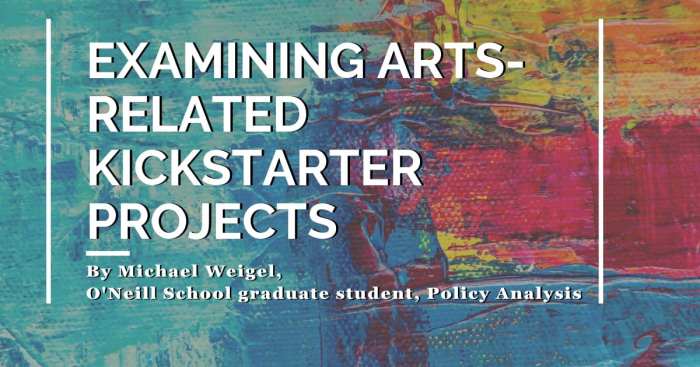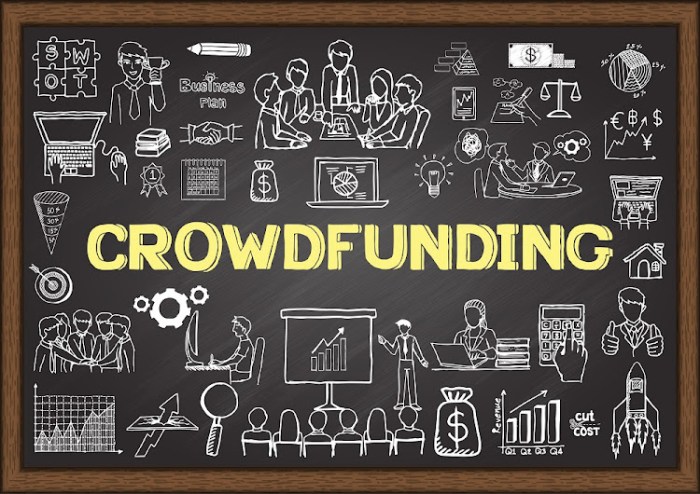Rethinking Crowdfunding in the Arts: A paradigm shift in the funding landscape, where innovative models and collaborative ecosystems empower artists and democratize access to support. This transformative approach reshapes artistic practices and opens new avenues for creative expression.
The rise of digital platforms has revolutionized crowdfunding, enabling artists to connect directly with audiences and access funding beyond traditional channels. This has spurred the emergence of alternative models, such as subscription-based and equity crowdfunding, which offer greater flexibility and potential for sustainable support.
The Evolving Landscape of Crowdfunding in the Arts: Rethinking Crowdfunding In The Arts

Crowdfunding has emerged as a transformative force in the arts, enabling artists to connect directly with their audiences and secure funding for their creative projects. This section explores the historical context of crowdfunding in the arts, the impact of digital platforms on crowdfunding practices, and emerging trends and innovations in the field.
Historical Context
Crowdfunding in the arts has its roots in traditional patronage models, where wealthy individuals or organizations supported artists and their work. In the 21st century, the advent of online crowdfunding platforms, such as Kickstarter and Indiegogo, democratized access to funding for artists of all backgrounds.
Rise of Digital Platforms
Digital platforms have revolutionized crowdfunding in the arts by providing artists with a global reach and the ability to connect with a wider audience. These platforms have also enabled artists to test the viability of their projects before investing significant resources, and to build communities of supporters who are invested in their success.
Emerging Trends and Innovations
Crowdfunding in the arts is constantly evolving, with new trends and innovations emerging all the time. These include the rise of subscription-based crowdfunding models, which provide artists with a recurring source of income, and the use of blockchain technology to create decentralized crowdfunding platforms.
Rethinking Crowdfunding Models

Traditional crowdfunding models, such as rewards-based and equity crowdfunding, have limitations and challenges. This section explores alternative crowdfunding approaches, such as subscription-based models or equity crowdfunding, and provides examples of successful crowdfunding campaigns that have utilized innovative models.
Limitations of Traditional Models
Traditional crowdfunding models can be limiting for artists, as they often require a large number of small donations to reach their funding goals. Additionally, rewards-based crowdfunding can lead to a focus on tangible rewards rather than the artistic project itself.
Alternative Crowdfunding Approaches
Alternative crowdfunding approaches, such as subscription-based models and equity crowdfunding, offer artists with different ways to secure funding. Subscription-based models provide artists with a recurring source of income, while equity crowdfunding allows artists to share ownership of their projects with investors.
Successful Crowdfunding Campaigns
Numerous successful crowdfunding campaigns have utilized innovative crowdfunding models. For example, the documentary film “Searching for Sugar Man” was funded through a subscription-based model, while the music platform Patreon has enabled artists to generate a steady income from their fans.
Building a Sustainable Crowdfunding Ecosystem

A sustainable crowdfunding ecosystem is essential for supporting artistic innovation and success. This section discusses the importance of community engagement and relationship-building in crowdfunding, the role of crowdfunding platforms in fostering collaboration and support, and best practices for creating a sustainable crowdfunding ecosystem.
Community Engagement
Community engagement is crucial for building a sustainable crowdfunding ecosystem. Artists need to actively engage with their audience, build relationships, and create a sense of community around their projects.
Role of Crowdfunding Platforms, Rethinking crowdfunding in the arts
Crowdfunding platforms play a vital role in fostering collaboration and support among artists and audiences. They provide artists with tools and resources to connect with their supporters, and they can also help to promote and market crowdfunding campaigns.
Best Practices
There are a number of best practices for creating a sustainable crowdfunding ecosystem. These include providing clear and transparent information about crowdfunding campaigns, offering a range of rewards and incentives to supporters, and building a strong online presence.
The Impact of Crowdfunding on Artistic Practices
Crowdfunding has had a significant impact on artistic practices. This section analyzes how crowdfunding has influenced the creative process and artistic decision-making, discusses the potential for crowdfunding to democratize access to funding and support for diverse artistic voices, and explores the challenges and opportunities presented by crowdfunding for emerging and established artists alike.
Influence on Creative Process
Crowdfunding can influence the creative process by giving artists more freedom to experiment and take risks. It can also lead to a more collaborative approach to artistic production, as artists seek input from their supporters throughout the crowdfunding process.
Democratizing Access to Funding
Crowdfunding has the potential to democratize access to funding and support for diverse artistic voices. It provides artists with an alternative to traditional funding sources, such as grants and loans, which can be difficult to obtain.
Challenges and Opportunities
Crowdfunding presents both challenges and opportunities for emerging and established artists. Challenges include the need to build a strong online presence and the potential for disappointment if a crowdfunding campaign fails. However, crowdfunding can also provide artists with new opportunities to connect with their audience and build a sustainable career.
The Future of Crowdfunding in the Arts
Crowdfunding in the arts is poised for continued growth and innovation. This section identifies potential growth areas and challenges for crowdfunding in the arts, discusses the role of technology and innovation in shaping the future of crowdfunding, and provides recommendations for artists, organizations, and platforms to navigate the evolving landscape of crowdfunding.
Growth Areas and Challenges
Potential growth areas for crowdfunding in the arts include the use of new technologies, such as blockchain and artificial intelligence, to create more efficient and transparent crowdfunding platforms. Challenges include the need to address issues of equity and inclusion in crowdfunding.
Role of Technology and Innovation
Technology and innovation will continue to play a major role in shaping the future of crowdfunding in the arts. New technologies, such as blockchain and artificial intelligence, have the potential to create more efficient and transparent crowdfunding platforms.
Recommendations
Artists, organizations, and platforms should embrace innovation and adapt to the evolving landscape of crowdfunding. They should also focus on building strong communities and relationships, and on creating high-quality artistic projects that resonate with audiences.
Key Questions Answered
How has crowdfunding impacted artistic decision-making?
Crowdfunding has fostered greater audience engagement, allowing artists to gather feedback and insights that can influence their creative choices.
What are the challenges of crowdfunding for emerging artists?
Emerging artists may face challenges in building a strong online presence and attracting a sufficient audience to support their projects.
How can crowdfunding contribute to a sustainable arts ecosystem?
Crowdfunding platforms can foster collaboration and community-building, creating a supportive environment for artists to thrive and innovate.